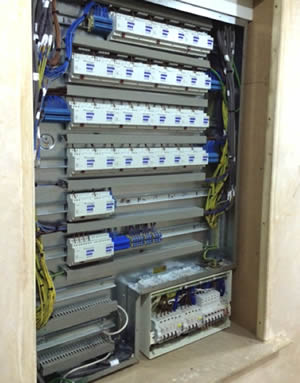 By Mark Warburton, Ivory Egg.
By Mark Warburton, Ivory Egg.
We are nearing the end of this series looking at the different stages of a project. It is now time to discuss the last stage – finishing the project. This is one of the most critical stages of the entire project and if completed correctly, can ensure the success of the project and increase referrals and repeat business.
Finish and Handover
Once all installation and programming issues are fixed, there are some final on-site steps to take:
* Check all enclosures are neat and labelled correctly.
* Final check that everything is working as designed.
* Finalise all documentation and print ETS reports.
* Back up the project to a separate device.

It is at this point that the customer will start to use the system and may ask you to make changes to the functionality. This may be as simple as reconfiguring a few keypads, but the bigger picture should be considered:
* There will always be ‘just one more change’.
* The customer’s ideas may make the system difficult to use.
* It causes drift away from the original specification.
Most integration companies will be very accommodating to customer change requests and the good ones will have factored in time for this from the start. However, as soon as this process begins, it can become difficult to prove that the project has been completed and so request final payment. To avoid this, work towards a clear stage of completion that is based on the functional specification created at the beginning of the project. By using this to prove the system works as designed, you can finalise the project and any remaining payments.
Following this, you can easily differentiate between original functionality and customer changes, allowing you to revert back to the original functionality if the need arises.
On-going Support
After the initial handover to the customer is completed, you will need to define a framework to enable you to offer post-project support. After all, you may complete the project with a healthy profit, but this can quickly diminish if you are continually asked to make changes to the system.
Offering the customer a yearly maintenance contract to support the system enables you to provide a high level of customer service without eroding the project profit or requesting additional one-off payments.
It can seem a bit bold to request further payment to support the system that has just been completed and paid for, but there is a clear difference between supporting the system that was originally designed and installed and making changes to improve usability or the efficiency of the building. By offering the first year of support as part of the initial installation cost, you will be able to prove the value of the maintenance contract, making it easier to charge for the service in subsequent years.
Another important point to remember is that most issues that occur with a KNX installation relate to the devices being controlled, not necessarily the KNX system. Unless other trades are offering on-going support, you will need to allow time to test and diagnose faults with the underlying electrical or mechanical systems.

The level of support offered as part of the maintenance contract will vary by project and budget. However, it is possible to define a standard format. The following could be included:
• Visit at the change of season to check all heating/cooling is working correctly.
• Include remote support and offer reduced-rate site visits.
• Discounts on any upgrades or new work.
• Product replacement cover for expired warranties.
• 24-hour phone support and guaranteed response time.
• Include minor firmware upgrades.
• Charge a reduced rate for major firmware upgrades that offer new functionality.
• Offer mobile device support for configuring new phones/tablets.
• Configure the system to notify you of any faults enabling you to offer reactive support.
One of the key benefits of offering maintenance contracts, other than the recurring revenue, is that it enables on-going interaction with your customers and increases your chances of completing any upgrades or being recommended.
The Last Word
That brings this series of articles looking at the different stages of a project to a close. Whilst every project is different, there are constant stages and themes that have been captured in each article. Taking the time at the beginning of a project to define documentation and workflows will make all the following steps easier and the project more likely to finish profitably.
The full list of articles in this series are:
• How to Sell KNX
• How to Specify KNX
• How to Choose the Right Products and Documentation
• Commissioning and Installation
• Troubleshooting After the First Switch On
• Handover and Supporting a Project
Mark Warburton is the Technical Director of Ivory Egg (UK) Ltd, a supplier of leading KNX products and provider of KNX training courses. Mark is also a regular contributor to KNXtoday magazine.












